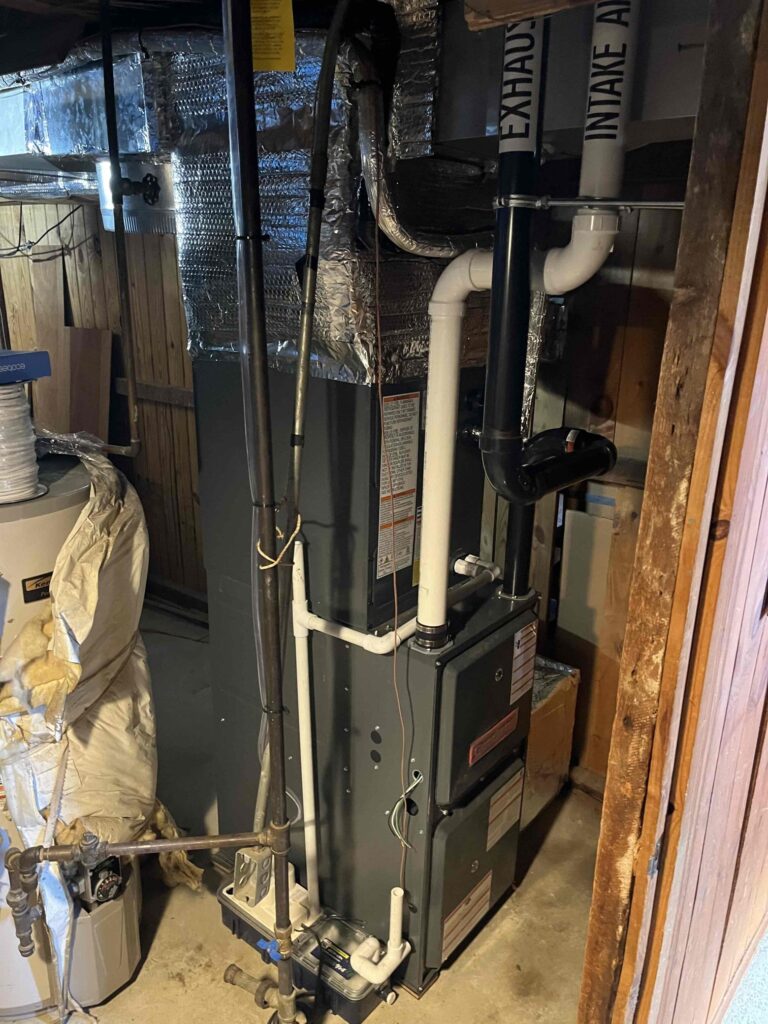Advancements in residential cooling technology reduce the energy you’ll expend when temperatures climb while also improving your home’s comfort. In this guide, you’ll see both widely available technologies and those to keep your eyes open for in the coming years.
Widely Available Technologies
HVAC service companies have incredible technologies available that can start improving your home’s comfort this summer while reducing your energy consumption. These options range from normal replacement systems to those that may cost more but have better cooling efficiency.
Two-Stage and Modulating Compressors
The compressor is responsible for creating the high pressure required to heat the refrigerant and vent out the heat it absorbed inside your home. A standard compressor operates in a single stage, either it’s on or it’s off, which means that it runs on high all the time. Higher-efficiency air conditioners have multiple stages, usually with a low and high setting to reduce the cooling capacity to maintain your home’s temperature. The highest efficiency systems have modulating compressors, meaning they can run in smaller increments to get the perfect capacity for your home at any given time. These systems run nearly constantly to maintain your home’s temperature but are significantly more efficient.
Variable-Speed Fans
Like compressors, standard circulating fans are either on or off. However, they also have options to improve their efficiency with dual and variable-speed fans. Dual-speed fans typically have a low and high setting, just like two-stage compressors. Variable-speed fans can run at increments as small as 1% starting at about 35% of the maximum speed. When running at lower speeds the fan consumes far less energy even though it runs nearly constantly. Additionally, because of the constant air movement, your home tends to stay more consistently comfortable.
Ductless Systems
Standard systems use a central air handler with an evaporator coil and central circulating fan. This draws in air from around your home, conditions it and then pushes it back out. Inevitably, there is some thermal energy loss as the air travels from the circulating fan to the supply vents around your home. Ductless systems alleviate the need for ducts and therefore solve the thermal loss they cause. In these systems, your home is divided into zones with each zone having its own air handler that is usually mounted on an exterior wall. There’s a small hole that’s drilled through the wall to allow the refrigerant line to pass through it and then is sealed. All of the air handlers send the refrigerant back to a single compressing unit outside, eliminating the need for multiple high-power units.
Smart Technology
Most people think of a smart thermostat when thinking about smart HVAC technology. This is certainly one component in those systems, allowing for easier control over their system’s operation. Those with remote access capability even allow users to make adjustments from smart devices with an internet connection.
However, smart technology goes well beyond the individual thermostat. Zoning is another key aspect of a smart system. With this concept, you divide your home into smaller zones, which could be at a room level or several rooms depending on your home’s design. These zones have individual controls that regulate when conditioned air flows into that area. Central HVAC systems use automatic dampers to control the zones. Ductless systems each have separate air handlers for each zone. In central systems, the control may be as simple as a temperature sensor or as complex as a full thermostat allowing for individual zone settings.
Geothermal Cooling
Geothermal uses the ground or water as the heat transfer medium rather than the ambient air. This allows the system to transfer heat more consistently without the variable of the temperature and weather outside. Ground source systems bury the refrigerant lines in the ground, usually at least six feet below the ground surface. Water-sourced systems bury refrigerant lines in a body of water or a deep river and use the water as the heat transfer medium.
Solar Cooling
Solar cooling uses a solar panel or solar array to power a standard HVAC system, especially a ductless system or mounted individual room units. Depending on the system, you can also run the system to heat water rather than relying on electricity or gas in a standard water heater. When combined with water heating, you can experience substantial savings in your energy consumption.
Up-and-Coming Technologies
Some technologies are gaining traction but are still in development. These not only improve efficiency and comfort but also reduce some of the toxic considerations of modern cooling systems.
Desiccant-Infused Cooling Technology
Humidity in the air can greatly affect how comfortable your home is. When you effectively manage that humidity, you achieve a better comfort level at a higher temperature. Some newer systems are integrating desiccant technology in the system to help draw more humidity from the air than is common with compression air conditioners.
Zero Carbon Source Cooling
Zero carbon source cooling jointly won the Global Cooling Prize in 2021. The system isn’t a completely new technology but combines several existing technologies to improve energy efficiency and environmental friendliness. It uses photovoltaic direct-driven technology, otherwise known as solar power, as its primary power source. Like standard systems, it leverages vapor-compression refrigeration but uses more environmentally friendly refrigerants. It also uses air or water as the cooling source, both of which are free and have nearly no environmental impact. The prototype that was evaluated to win the award is designed for residential applications, meaning this could be available on the consumer market in the near future.
Magnetic Refrigeration
Common residential air conditioners rely on a high-power compressor to regulate refrigerant pressure, allowing it to absorb and expel heat. Newer technology is exploring using a combination of magnets and gadolinium in place of a compressor. This metal heats up in the presence of a magnetic field and cools down when you remove that field. The current challenge is getting enough of a temperature change to allow a refrigerant to expel the heat that it has absorbed. Once this obstacle is overcome, look for the technology to start showing up in high-efficiency air conditioning systems.
Phase Change Material Coolers
A phase change material is something that changes its state of matter at certain temperatures, like water changing from liquid to solid or gas. Ideally, the material changes phases at around room temperature. These materials absorb and store thermal energy, or heat, when the temperature rises and expel it back into the air when the temperature drops. The practical application for this technology is to pre-cool air so there’s less strain on the air conditioner to bring the circulating temperature down to a comfortable level. It then releases that heat in the evening when temperatures cool back off.






